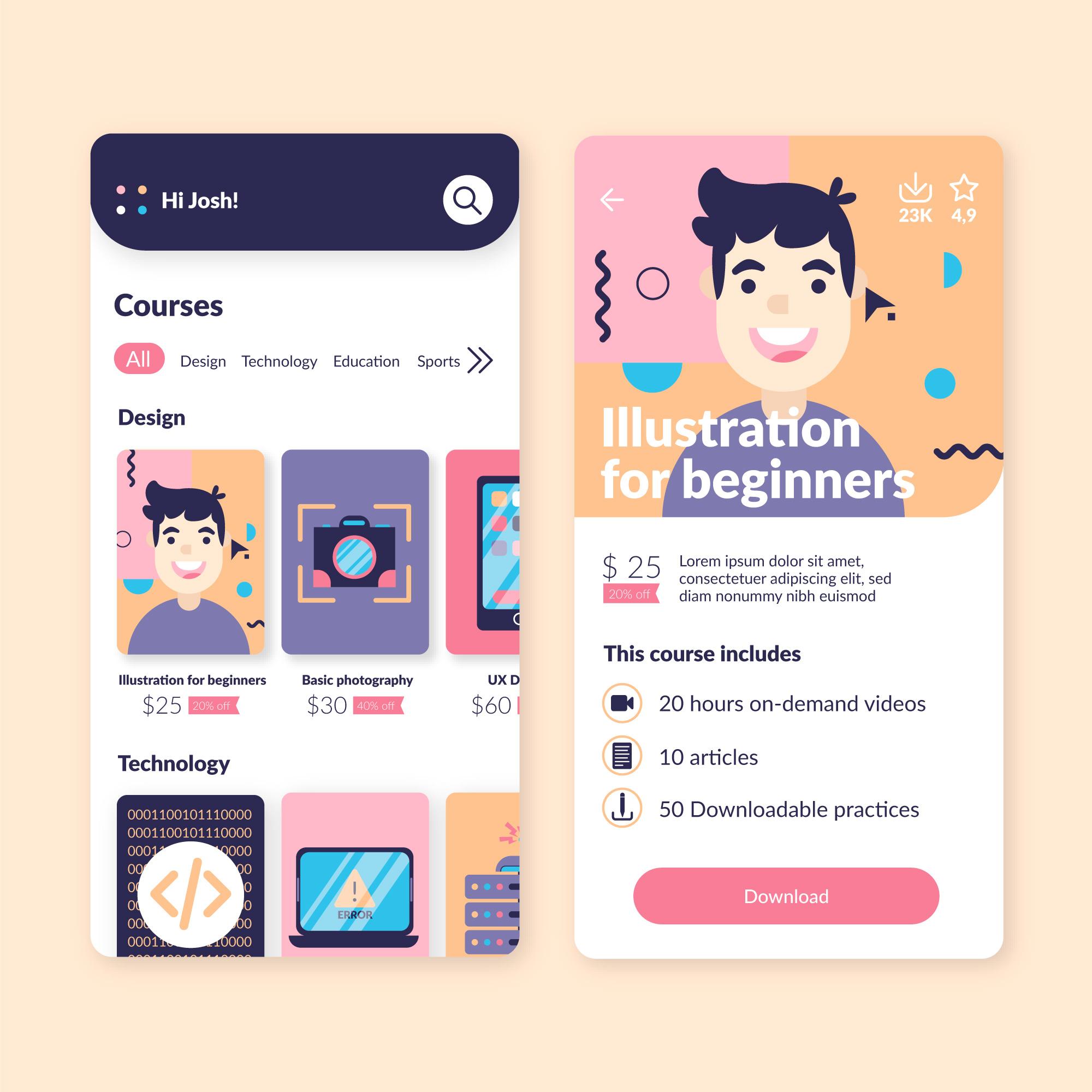
Designing exceptional user experiences (UX) requires more than creativity and technical skills—it demands a deep understanding of the people who will interact with the product. This is where user research comes into play. By uncovering insights about users’ needs, behaviors, and pain points, user research ensures that design decisions are informed, purposeful, and impactful.
In this blog, we’ll explore the significance of user research, its various methods, and how it serves as the cornerstone of creating user-centered designs that resonate with audiences.
What is User Research?
User research involves systematically gathering and analyzing data about the target audience to guide the design process. It aims to answer key questions such as:
- Who are the users?
- What are their goals and challenges?
- How do they interact with similar products?
By understanding these aspects, designers can create solutions that not only meet users’ needs but also enhance usability and satisfaction.
Why is User Research Essential?
1. Aligns Design with Real User Needs
Assumptions can lead to misguided design decisions. User research eliminates guesswork by providing data-driven insights about users’ preferences, behaviors, and pain points.
2. Reduces Design Risks
Investing time in user research reduces the likelihood of costly redesigns or product failures. By validating concepts early, teams can ensure their solutions are both viable and user-friendly.
3. Increases Usability and Accessibility
Research helps identify usability challenges and accessibility barriers. Addressing these early in the design process ensures a smoother, more inclusive experience for all users.
4. Improves User Retention
A well-researched design resonates better with users, increasing engagement and loyalty. When users feel understood and valued, they are more likely to stick with the product.
5. Strengthens ROI
Happy users translate to better business outcomes. Products designed with user research tend to achieve higher satisfaction rates, which can boost conversions, reduce churn, and foster positive brand perception.
Key Methods of User Research
User research can take many forms, depending on the project’s goals and resources. Here are some of the most effective methods:
1. Surveys and Questionnaires
- Purpose: Gather quantitative data about user demographics, preferences, and behaviors.
- Advantages: Quick and scalable; ideal for reaching a large audience.
- Example: A survey asking users about their top frustrations when using a mobile app.
2. Interviews
- Purpose: Collect in-depth, qualitative insights by speaking directly to users.
- Advantages: Reveals emotional and contextual aspects of user behavior.
- Example: Interviewing users to understand their challenges while shopping online.
3. Usability Testing
- Purpose: Observe users interacting with a product to identify pain points and areas for improvement.
- Advantages: Provides actionable insights for enhancing usability.
- Example: Watching users navigate a prototype to test if they can complete key tasks efficiently.
4. Field Studies
- Purpose: Study users in their natural environments.
- Advantages: Captures real-world behaviors and context.
- Example: Observing how healthcare professionals use a medical app during their workday.
5. Analytics and Heatmaps
- Purpose: Analyze user interactions through data and visualizations.
- Advantages: Tracks actual usage patterns and identifies problem areas.
- Example: Using heatmaps to see where users click most on a landing page.
Incorporating User Research into the Design Process
1. Define Objectives
Begin by identifying what you need to learn. Are you validating a concept, solving a usability issue, or understanding a new audience segment? Clear goals will guide your research approach.
2. Choose the Right Methods
Select research methods based on your objectives, timeline, and resources. For instance, usability testing may be more appropriate for refining a prototype, while surveys are better for gathering broad insights.
3. Engage Stakeholders
Share research findings with cross-functional teams, including product managers, developers, and marketers. This ensures everyone is aligned on user needs.
4. Create User Personas
Translate research data into user personas—fictional representations of your target audience. These personas serve as a reference throughout the design process.
5. Iterate Based on Feedback
Use research findings to refine designs. Iterative testing and adjustments ensure that the final product evolves to meet user expectations.
Challenges in User Research
1. Limited Resources
Budget and time constraints can make it challenging to conduct comprehensive research. In such cases, prioritize methods that offer the most value within your limitations.
2. Bias
Researcher bias or leading questions can skew results. To mitigate this, maintain a neutral tone and involve diverse perspectives in the research process.
3. Recruiting Participants
Finding representative users can be difficult. Leveraging social media, email lists, or research platforms can help reach the right audience.
4. Analyzing Data
Large volumes of data can be overwhelming. Use tools and frameworks to organize, analyze, and draw actionable insights.
The Future of User Research
As technology evolves, user research is also becoming more sophisticated. Emerging trends include:
- AI-Powered Insights: Tools like machine learning analyze user data at scale, uncovering patterns and preferences.
- Remote Testing: Platforms enable global usability testing, making it easier to gather feedback from diverse audiences.
- Emotion Tracking: Technologies like eye-tracking and facial recognition provide deeper insights into user emotions and reactions.
Conclusion
User research is the foundation of effective design. It bridges the gap between creators and users, ensuring that products are not only functional but also meaningful and engaging.
By investing in user research, designers can build solutions that resonate deeply with their audience, leading to better usability, higher satisfaction, and greater success in today’s competitive landscape.
Devoq Design is a premier UI/UX design agency with a strong presence in both Geelong and Ballarat. Renowned for their innovative and user-centric approach, Devoq Design specializes in creating seamless and engaging digital experiences. As a leading UI/UX Design Agency in Geelong they cater to a diverse range of industries, ensuring each project is tailored to meet the specific needs of their clients. Similarly, as a top UI/UX Design Agency in Ballarat, Devoq Design combines cutting-edge technology with creative expertise to deliver exceptional results that drive business growth and user satisfaction.







